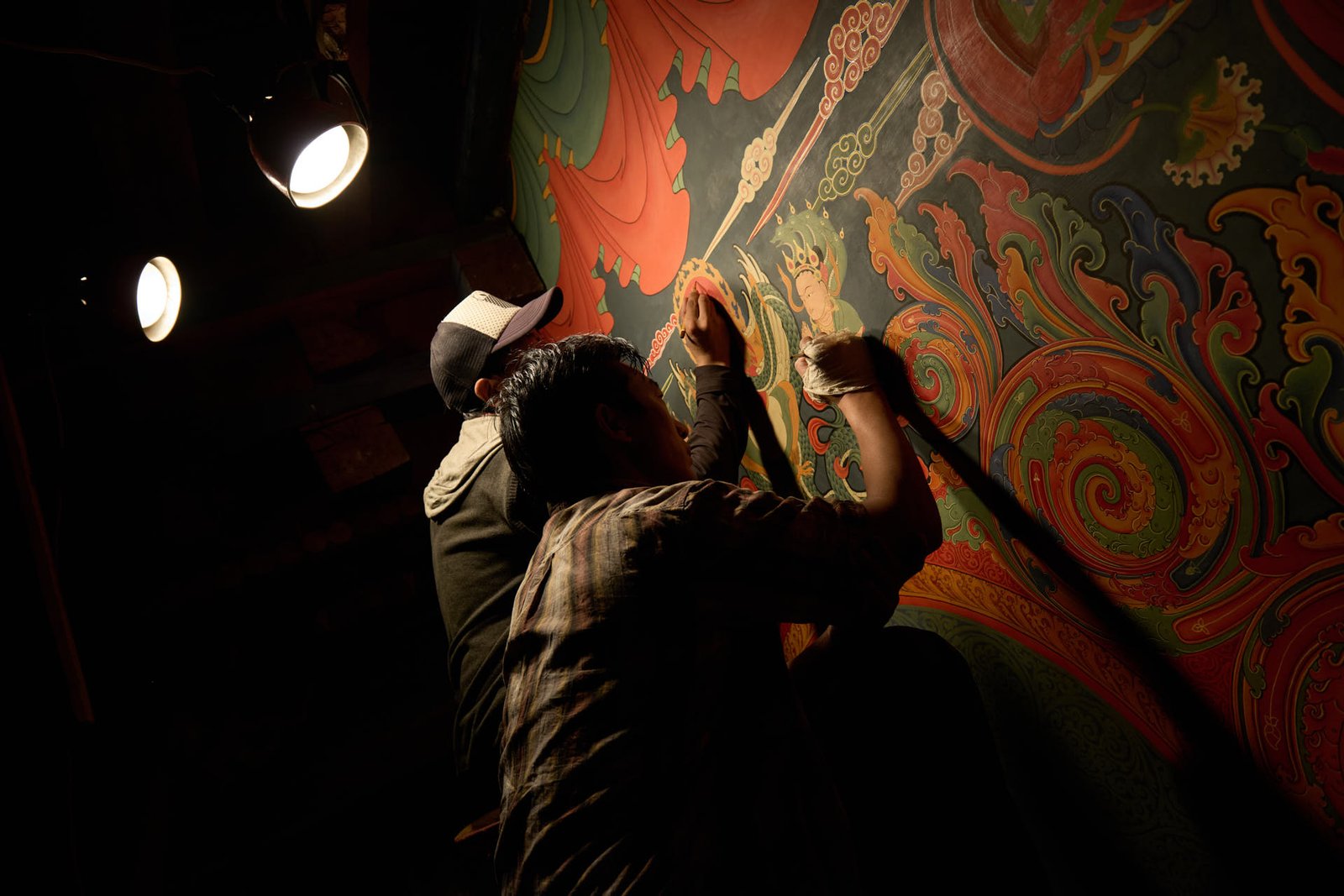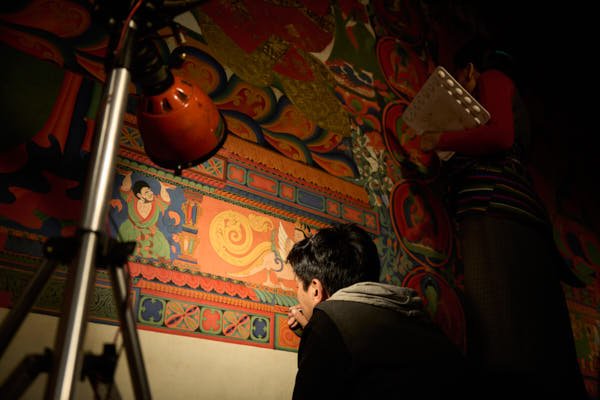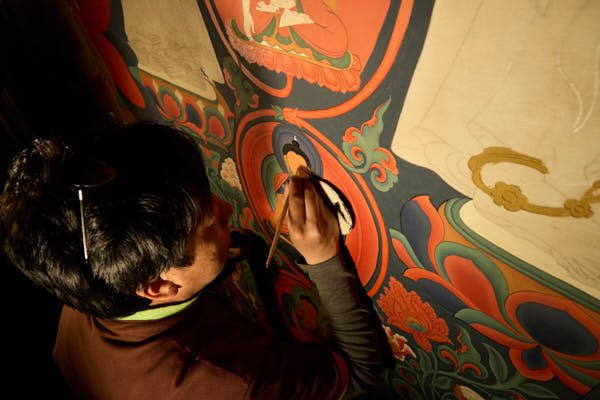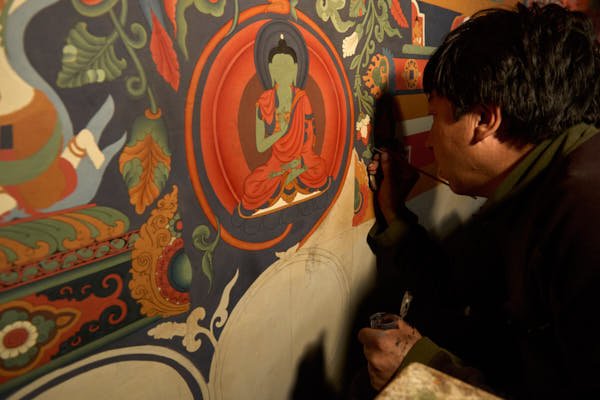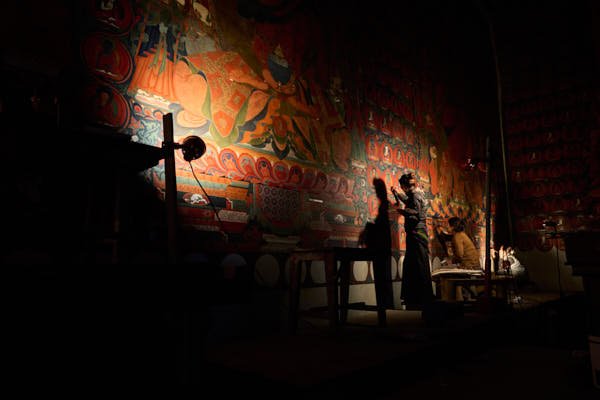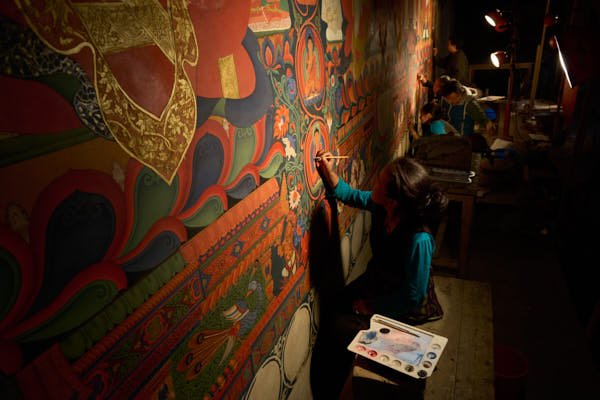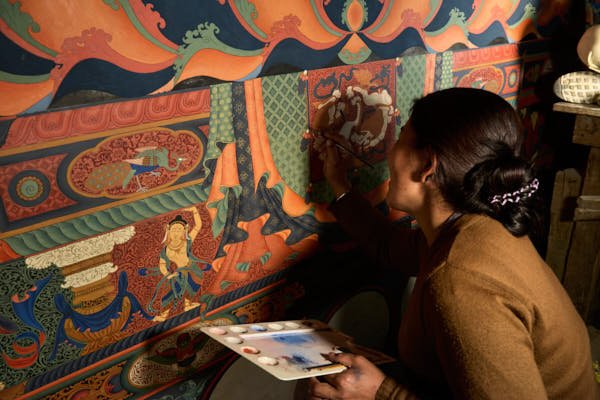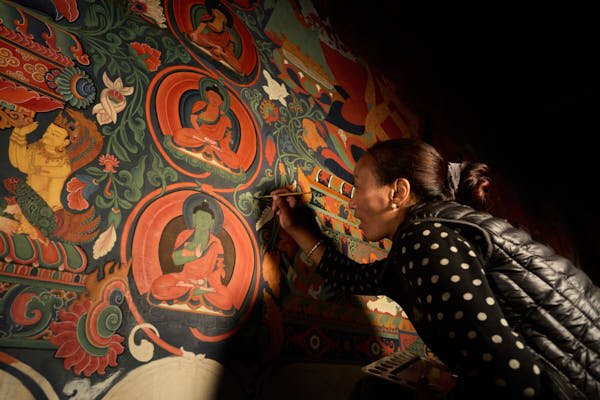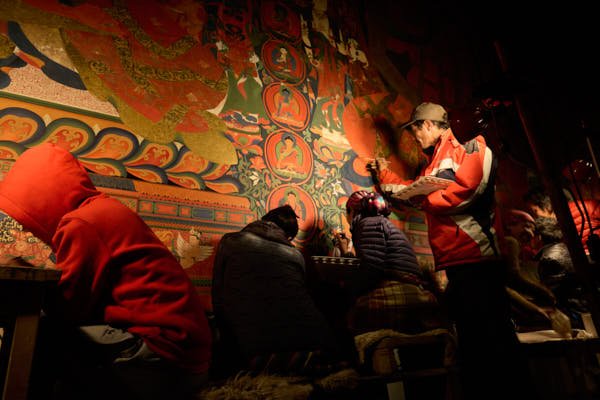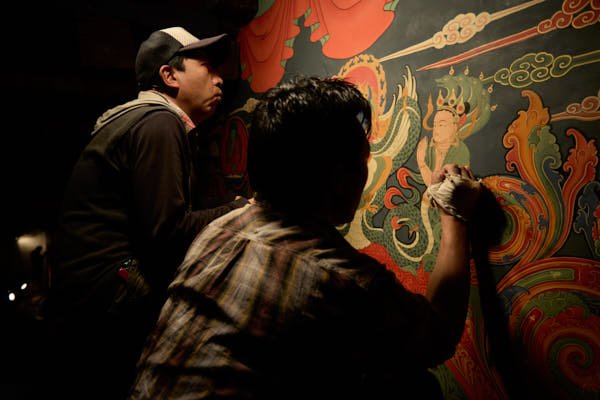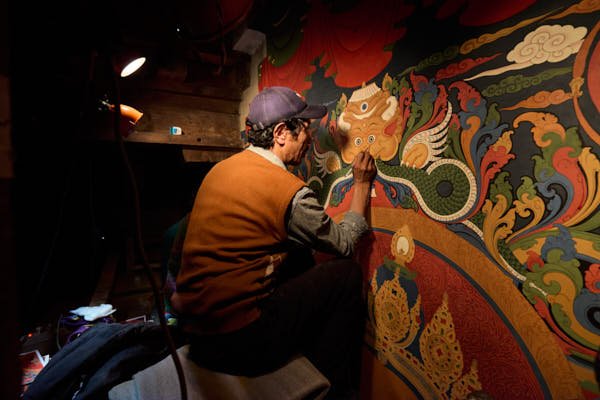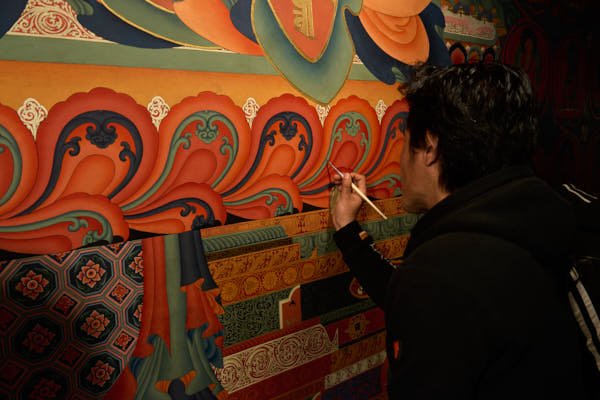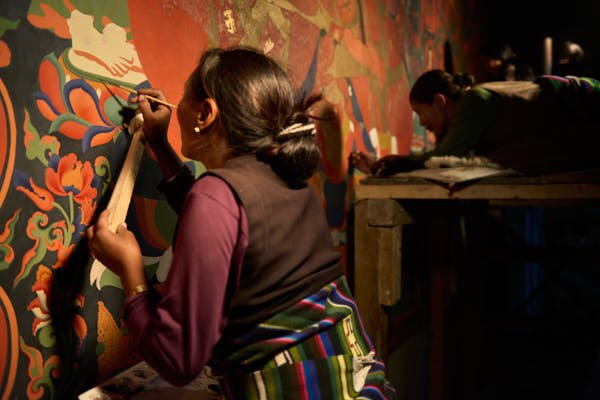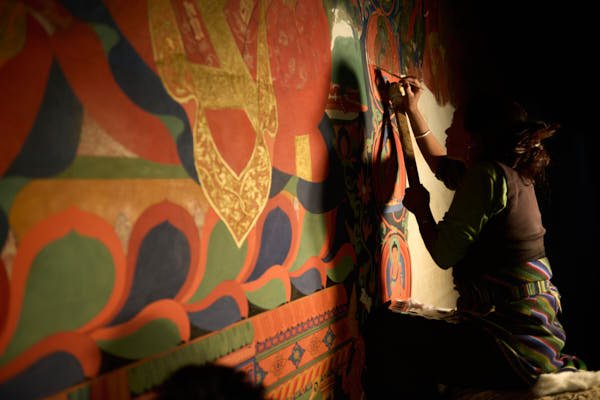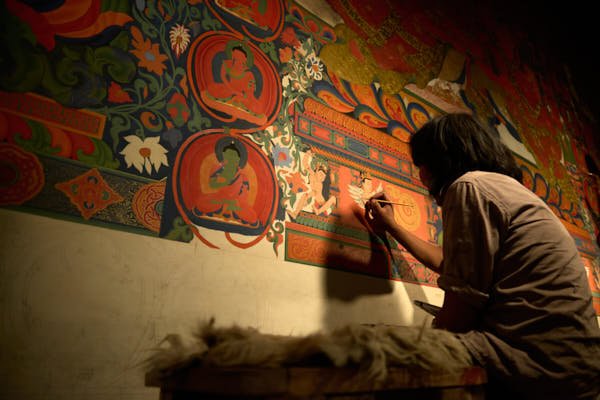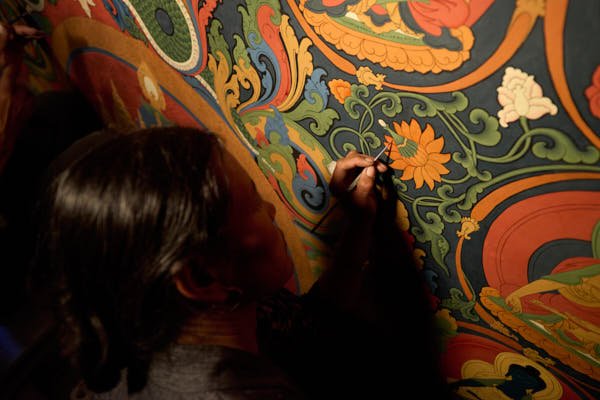lining
The application of the first layer of color would prevent to see the details of the drawing needed for applying the shading. So once the base color had set, the outlines of draperies, flowers, ribbons, patterns and whatever required shading was drawn once again on the newly laid solid color with pencils. Then the final lining was carried out using waterproof black ink. Its thickness would depend on the details, the decorations and the figures of the XV century paintings found above each section where the reconstructions took place.
shading
The shading was carried out by slowly building up the dark-to-light transition to build up three-dimensional shapes on solid colors areas thus giving depth to the figures, the ornaments and the decorations painted in the monastery. Natural dies such as indigo (dark blue) and alizarin crimson (dark red) were used in the form of watercolors and applied very patiently, allowing the shade to dry up after each application.
